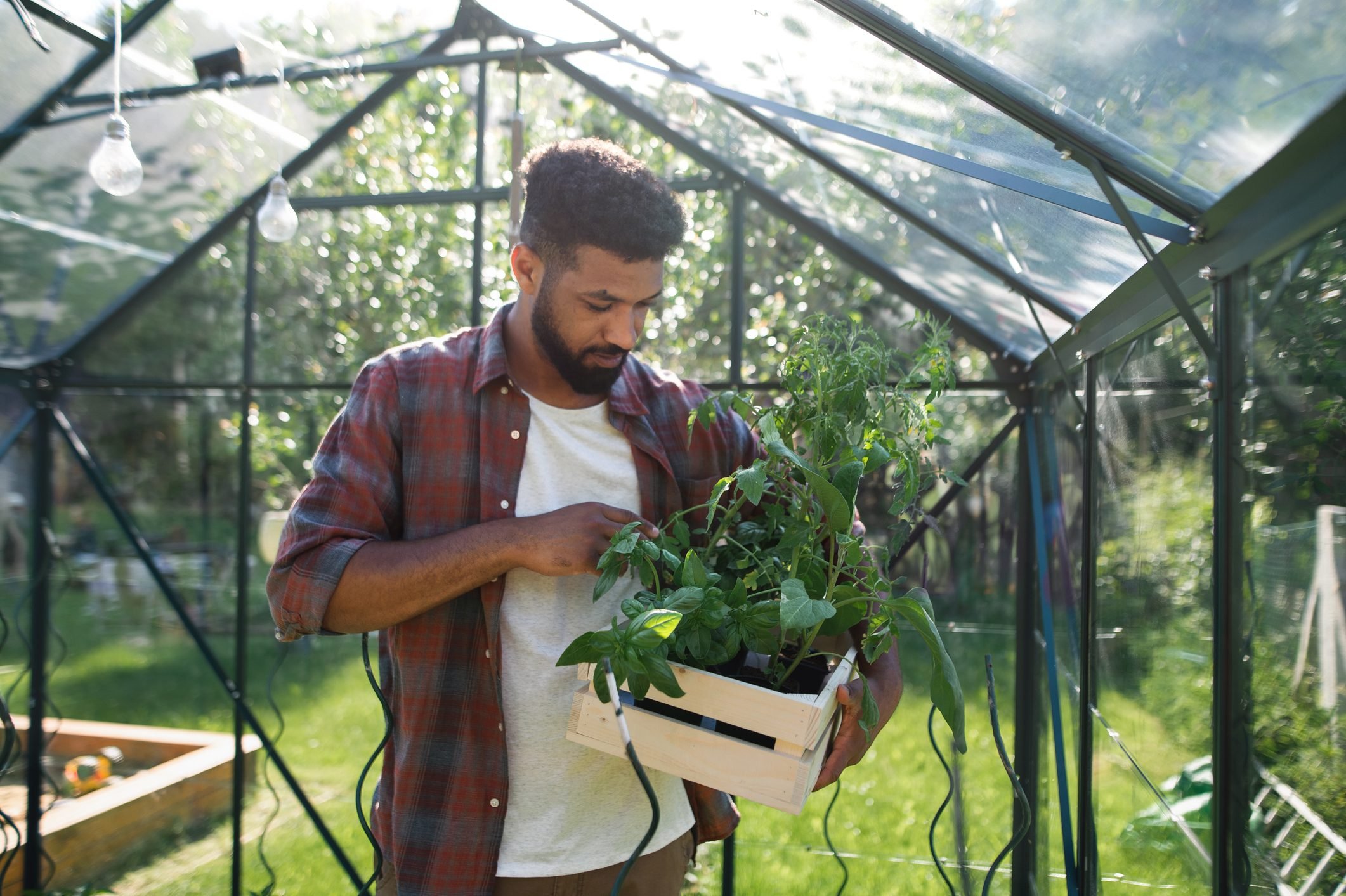A greenhouse extends your garden fun all year long, but what's the right temperature to keep your plants happy?

What Is the Optimal Temperature for a Greenhouse?

When I built my greenhouse ten years ago, I thought it would be simple to keep the temperature just right. I soon discovered it wasn’t so easy.
One winter, when we were out of town, my son opened the greenhouse to water the plants and the door didn’t catch properly. A storm came through and blew open the door, killing half the plants inside. This was a good lesson to keep my greenhouse at the optimal temperature— and buy an automatic door closer.
Here are more tips and tricks for keeping your greenhouse the optimal temperature. Don’t miss out on the essentials to keep your plants thriving, either.
On This Page
What Is the Optimal Temperature for a Greenhouse?
It depends on what you’re trying to grow. For a cold-season crop like lettuce or greens, 50 degrees is sufficient. For tomatoes or cucumbers, you want 65 to 70 degrees. Citrus trees can handle a lower temperature, but if you’re trying to push them toward fruit production like in a Victorian Orangerie, you’ll need 70 to 75 degrees.
“Backyard greenhouses have their own microclimates because of nearby trees, houses and fences,” says Rodd Moesel, the founder, president and owner of American Plant Products and Services, Inc., which sells greenhouses, interior equipment and supplies. Don’t forget to check out our collection of the best greenhouse heaters.
Controlling Greenhouse Temperature and Humidity
Moesel says one of the biggest mistakes people make when they install a greenhouse is thinking they won’t need to heat it. “Your greenhouse won’t collect enough heat from the sun in winter,” he says. “It’s a big misconception.”
The top fuel choices are natural gas, propane and electric. Natural gas is by far the cheapest, nearly half the cost of electricity, and it’s available in most of the country. But gas lines must be installed, increasing upfront costs. Propane is best in rural areas, though prices can fluctuate. If you go with propane, always keep one full bottle as a backup.
Moesel recommends greenhouse owners install two heaters. “If a pilot light goes out, you’ll lose your plants unless you have more than one heater,” he says.
In my greenhouse out in the country, I have two heating systems, one propane and one electric. We did this because our electricity went down for two weeks during a recent ice storm. We ensure our 100-pound propane bottles are full if there’s bad weather in the forecast.
“As you move north throughout the U.S., the price for heating your greenhouse doubles due to harsh winter temperatures,” said Moesel, “Every 10 degrees warmer you heat the greenhouse also doubles the fuel you use.”
Ventilating Your Greenhouse
Ventilation is important no matter where you live. Automatic shutter ventilation is needed because you won’t always remember to open and close shutters. Fans keep the humidity and temperature at the right levels.
My greenhouse has a top shutter and side ventilation powered by solar energy. It’s good to have a backup battery for cloudy days.
In winter, you need one-quarter of the ventilation you do in summer. In winter I simply turn off my side ventilation so plants on the elevated benches aren’t nipped by cold air.
Other Tips
Buy a Recording Thermometer
Once your greenhouse is installed, buy a recording thermometer. Many connect to Wi-Fi so you can upload data to an app on your phone. This allows you to react quickly to temperature changes.
“It’s one of the first tools I would have,” said Moesel, “That way, you can see how low the temperature got overnight.”
In my greenhouse, my thermometer has Bluetooth that connects to a monitor in my kitchen. I can check my greenhouse temperature at a glance. It’s saved my plants many times when a propane bottle ran out and the electric heater couldn’t heat the house on its own.
Keep Your Greenhouse Cooler in Summer
If you live in a hot climate, you’ll probably only use your greenhouse in spring, winter and fall. However, if you live in a cold or short-season climate, you can grow plants throughout the summer. Shade cloth and fans keep your greenhouse cooler.
Shade cloth
- Sunlight is four times brighter in the summer and the days are longer, so you’ll need shade cloth.
- You may also need shade cloth if you’re starting seeds later in spring or taking cuttings in early fall.
- Traditional black polypropylene shade cloth reduces the inside temperature by 12 to 15 degrees.
- New reflective shade cloths cool more, but they cost more.
Fans move the air
- Moving the air in a greenhouse helps with humidity and temperature.
- Because my greenhouse is small, we set up a box fan in mid-April to move the air as temperatures rose, but there are fancier solutions.
- Often if you buy a greenhouse kit from a professional, it will come with a fan suited to its size.
- You don’t need as much air movement from late September through late March or early April.


















